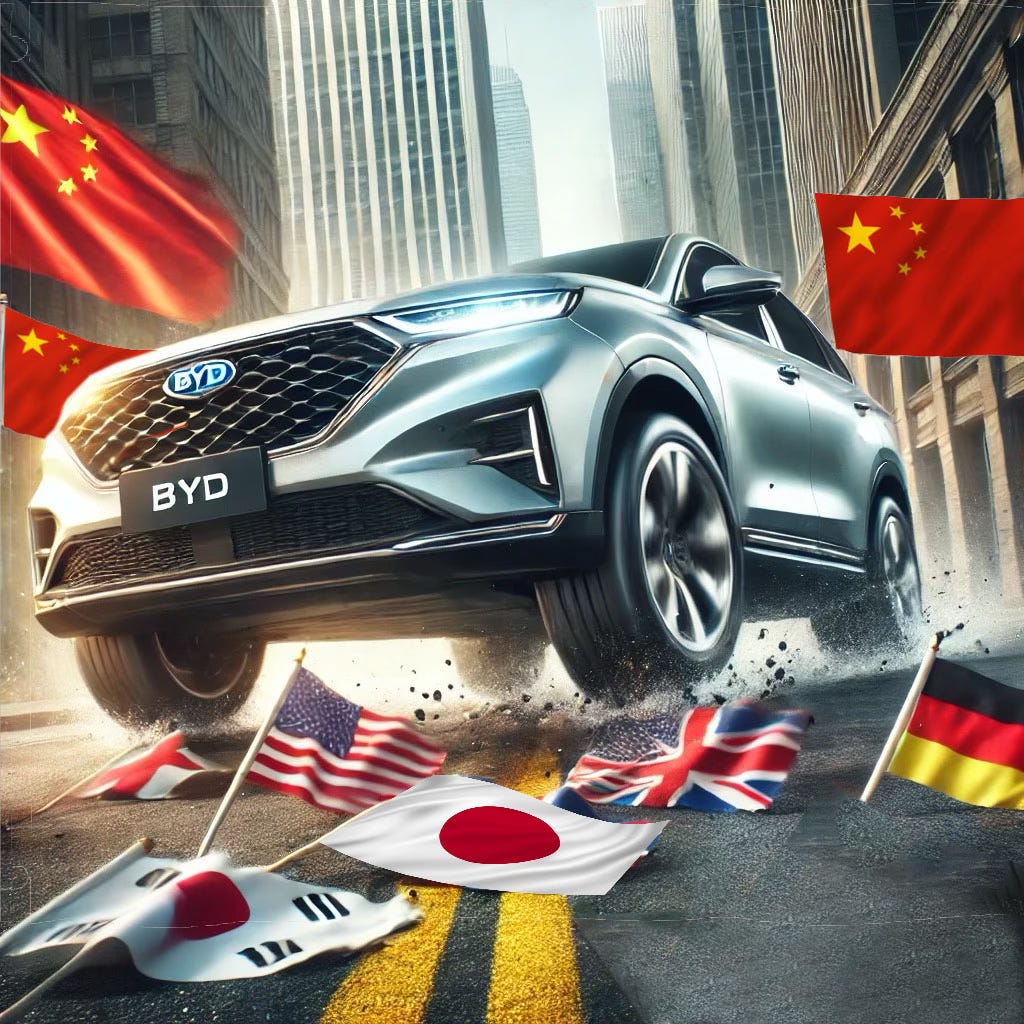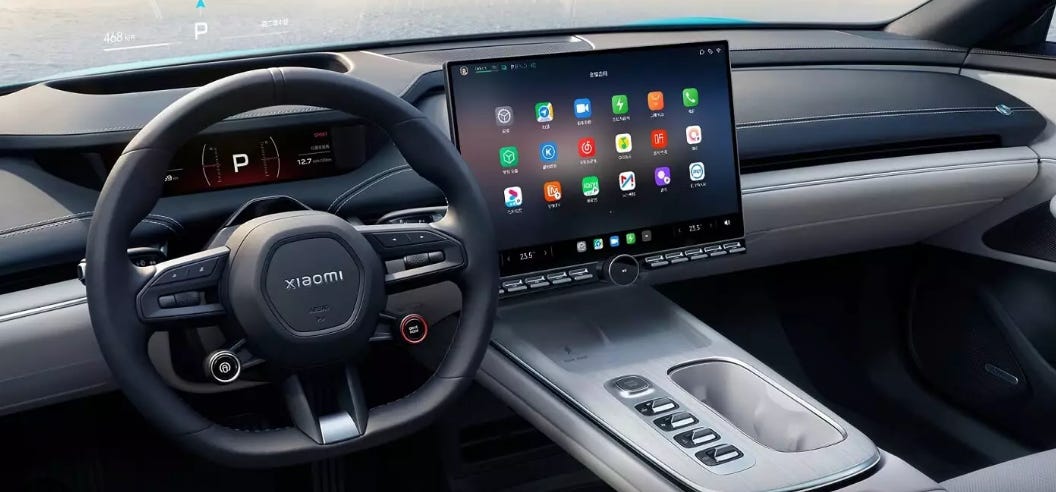China Is Done With Global Carmakers: "Thanks For Coming"
Dwindling Sales and Vanishing Profits
China Is Done With Global Automakers: "Thanks For Coming"
The visiting team is still on the field, running around as fast as it can, trying to forge a comeback.
For decades, they thought they were playing on a familiar field. But time is up, the game is over. China - the home team – is the winner.
Spectators have just watched a sudden and catastrophic collapse of global automakers in China.
How did it happen?
• • •
For most of this century, foreign brands totally dominated China’s car market. Every year, they sold millions of cars and earned billions in profits.
Chinese consumers swarmed into Buick, Volkswagen, BMW and Toyota showrooms nationwide, happy to pay cash for the prestige of owning a brand that wasn’t Chinese.
“China is our forever profit machine,” my colleagues at GM liked to humble-brag a decade ago, back when I ran GM’s Indonesia operations. “We can bank on an easy $2 billion dividend every year.”
Now, suddenly, that golden era is over.
Sales and profits in the People’s Republic are vanishing. And boards in Detroit, Wolfsburg and Tokyo are stunned by the speed and intensity of the changes.
Panic in Detroit - And Everywhere Else
Ford has lost more than $5 billion in China since 2020. Sales are down 70% from their peak. “We’ve never seen competition like this before,” says CEO Jim Farley.
GM is hurting, too. The former poster child for sunny US-China relations, GM has lost more than $200 million so far this year alone. That marks the first time in two decades that GM’s China operations have printed red ink.
Mary Barra says the situation in China is “unsustainable.”
Stellantis already knows the bitter taste of capitulation. Jeep was forced to beat an ignominious retreat from the China market in 2023 after its joint venture went bankrupt.
Detroit is not alone. Almost every non-Chinese brand – German, Korean, Japanese and French – is feeling shell-shocked as they watch their market shares disappear.
Plummeting China Sales
GM
2017: 4.1 million
2024: 1.8 million (f)
Hyundai / Kia
2016: 1.2 million
2024: 220,000 (f)
Volkswagen
2017: 4 million
2024: 2.5 million (f)
China’s No. 1 carmaker, BYD, on the other hand, has seen sales skyrocket.
BYD
2017: 420,000
2024: 3.6 million (f)
Electric Take-Off
Driving China’s ascendancy is a massive and abrupt shift to electric vehicles. The EV share of total car sales will jump to almost 50% this year, up from just 6% in 2020.
Think about that. China has sprinted from 1 million to more than 10 million annual EV deliveries in just four short years. (I already see you dealership folks scratching your heads in amazement.)
Global automakers were caught flat-footed on EVs, lulled into complacency by years of winning at selling gasoline-powered vehicles.
Chinese automakers, in contrast, seized on the shift to electrics. This year, eighteen of the twenty best-selling EVs are Chinese brands. The other two are Teslas.
Advanced Technology
It is no secret that global automakers are finding it impossible to match Chinese competitors on costs. BYD builds cars 25-30% more cheaply than what global automakers can manage, thanks to extreme vertical integration, breathtaking speed and generous subsidies from the city, provincial and national government agencies.
But this is not just a low-cost, EV story. Chinese automakers now equip their cars with some of the world’s most advanced autonomous and digital cockpit features. Keep an eye on tech giants like Xiaomi and Huawei, which infuse their new cars with world-class software.
China’s strength is alarming even to mighty Toyota. In a 2023 interview with the Toyota Times, EV Chief Takero Kato recalled his shock during a business trip to China.
“For the first time, I came face-to-face with the competitiveness of the Chinese. Laying eyes on equipment that I had never seen in Japan and their state-of-the art manufacturing, I was struck by a sense of crisis. We’re in trouble!”
Chinese automakers tell me privately that they carry a deep respect for Elon Musk and Tesla. They tend to shrug with indifference at most of the world’s other car companies.
Nationalism
When it comes to cars, Chinese brands are suddenly the new cool. Global brands, once so aspirational, are now so yesterday.
Nationalism is the invisible but potent force behind the shift.
One day at our Beijing office in the late 1990s, I asked my ace staffer, what he thought about China’s joint venture arrangements with foreign companies.
“It’s okay for now,” he said, “until we can kick your asses out of here.”
Chairman Mao never cared much for foreigners, either. The first line of the first chapter of the Selected Works of Mao Tse-Tung reads: “Who are our enemies? Who are our friends? This is a question of first importance for the revolution.”
If Mao were around today, he would no doubt smile at China’s triumphant moment in the race for automotive supremacy. As do many of China’s 1.3 billion citizens.
China Rules
We are stepping into a new era where Chinese automakers dominate their home market. Many will say that this outcome was inevitable. But no one saw it coming this fast.
BYD became China’s best-selling brand last year, knocking VW from its top ranking for the first time in 38 years. Chinese brands as a group are devouring market share at the expense of the once-mighty foreign makes.
If You Can’t Beat Them…
Global automakers will try to stick around, of course. Stellantis has invested $1.7 billion to take a minority position in Leapmotor, a promising EV startup.
CEO Carlos Tavares understands that China is still the most efficient place on the planet to build cars. His vision is to have Leapmotor build EVs for export. Those vehicles would carry one of the Stellantis’ nameplates - Fiat or Citroen or Jeep. VW has made a similar investment into Xpeng, another young Chinese EV company.
If you can’t beat them, try a new role … as junior partner.
Other global companies are working hard to shake free from the shackles of their cumbersome joint venture commitments. Word on the street is that Toyota hopes to create wholly-owned operations similar to the one Tesla operates in Shanghai. But Toyota’s own JV partners, FAW and GAC, have objections to the move.
What is the Japanese phrase for “frustrated sigh”?
Others – GM, Ford, Hyundai – are re-purposing their idle Chinese plants to manufacture vehicles for export. Get this: Four of the five best-selling Chevies in Mexico are built in China by GM and its Chinese partner, SAIC. As a 50% shareholder in the JV, SAIC collects half the profits on all those cars.
The reality is that China as a growth and profit paradise for global automakers has disappeared. It will never return.
Most of them will be shown the door within the next five years. Some will find the exits even sooner.
• • •
Michael Dunne, August, 2024
Dunne Insights LLC
www.dunneinsights.com





China's priorities seem to be technology leadership (to maximize global exports), independence from Mideast oil (thus the switch to EVs) and, then, third, concern for the environment.
Great question. Volvo is doing very well in Europe, okay in the US and struggling in China. That suits Geely just fine. The goal is to be competitive globally and Volvo brand gets them going in that direction.